The Division Review - The Division review
The Division review
Incursion update – Moving in the right direction?
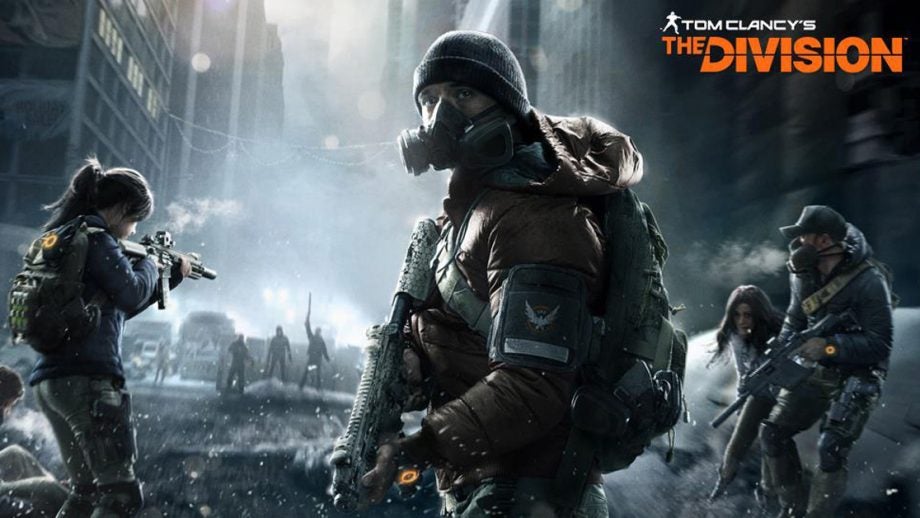
Sections
- Page 1 The Division Review
- Page 2 The Division review
The Division is this year’s Destiny, and I don’t mean sales numbers or even the obvious similarities, but in how people will feel about it. For some it will be a slog; a repetitive grind through endless missions and activities, spiced up by its MMO elements but, in the end, just another Ubisoft game. For others, it’s going to be another Destiny-sized obsession, bringing us back for hour after hour of shooting, looting, upgrading and levelling.
I think it’s safe to say that, if you loved Destiny – or even griped continuously about Destiny despite playing it for over fifty hours in a month – then you’ll have roughly the same experience with The Division. If you just plain hated Destiny, well, nothing The Division does will convince you.
Buy now: The Division at ShopTo from £39.85
5 Things you need to know about The Division
The reasons are pretty clear. For all the differences between the two games – modern vs sci-fi settings, third-person vs first-person, earthbound cover-shooting vs superhero acrobatics, space fantasy vs gritty realism – they both work in roughly the same way.
Both games are really Diablo-style action RPGs masquerading as shooters, where the stats matter almost as much as where you’re shooting, and where the reward for play comes not so much in completing missions, as in the XP and loot you accrue while doing so.
As in Destiny, it’s partly about developing skills and building a champion, and partly about the gear and guns you get your hands on – and finding out what they can do. Remember those guys with the flamethrowers who made your life a misery two hours ago? Now let’s see who’s laughing when the SMG you’re packing has a damage-per-second rating through the roof.
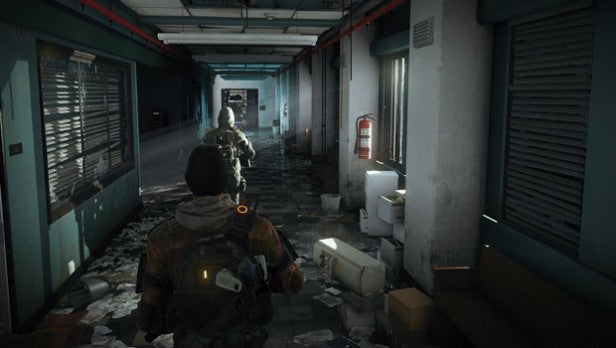
As with Destiny, it wouldn’t work if the core combat wasn’t any fun in the first place. Luckily, it is. The Division is a tighter, more dangerous cover-based shooter, where you really need to tread carefully, find a good wall to lurk behind, time your shots carefully and watch out for those damn grenades. If Destiny has its roots in Halo, then this is closer to a Ghost Recon or Gears of War.
Like many successful cover systems, what feels clunky at first seems smarter and more flexible with time, as you learn to move in and out of cover quickly, use evasive moves, and switch smoothly from cover to cover. It’s also heavily reliant on skills; the offensive and defensive capabilities your character learns, which can be used to heal and revive, use mobile mines or set-up turrets, or get extra protection for you and your group. With their cooldown timers and bonus mods, skills bring more of an MMO flavour to The Division than you might initially expect.
Cleverly, there’s no actual class structure. Instead, you’ll spend a large portion of your time in The Division performing missions for the three departments supporting you as an agent in a post-pandemic, snowbound Manhattan – medical, security and tech.
Completing missions earns you resource points for that department, which can then be spent on new facilities and upgraded for that department. These in turn open up new skills, new talents and new perks. Many of these simply make you a better agent, but inevitably, medical skills will make you better at healing and reviving, while tech skills will give you new ways to dish out damage.
Related: Best PS4 games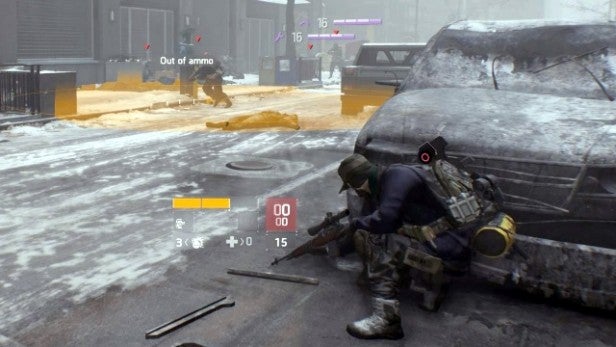
The flexibility of the system is limited by the fact that the story missions deliver the most resources, and that the difficulty levels encourage you to tackle them in a certain order. However, you can pick up extra resources in side missions, so there is some scope to focus on a specific department, and with only two or three skill slots to play with, it pays to specialise. Weapons also play their part here, giving you more scope to concentrate offensive or support roles, without having any one load-out forced upon you.
The abilities systems turn out to be more complex than they first appear. Skills are your active abilities, enabling you to toss out a portable healing station, drop a temporary wall or throw out a homing mine. Talents are passive abilities, giving you specific benefits (like a boost to accuracy or damage) once activated by specific conditions (like running into cover). Perks, meanwhile, are passive abilities that enable you to carry more, earn more experience or increase your damage.
All three systems interact with an equally sophisticated system of weapons and armour mods, while also tying into co-op play. For example, many abilities and perks won’t affect just the abilities of your character, but of other characters in your current group. The result? An unexpectedly huge amount of tactical depth.
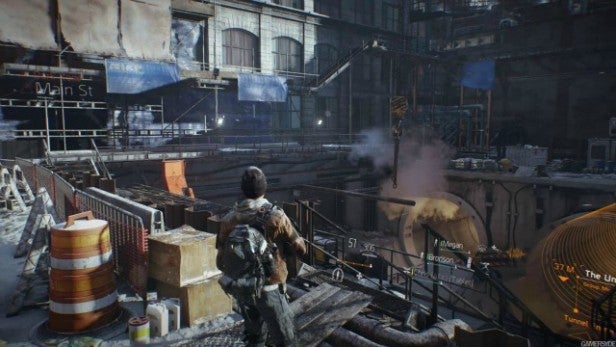
All this can be a challenge to get your head around, not helped by some weird UI decisions, poor tutorials and a help system buried in the menus. Think Destiny 1.0’s Light levels were bewildering? Well, prepare to feel overwhelmed by The Division’s complex inter-related progression systems. In fact, prepare to be overwhelmed full-stop, because between story missions, side-missions, encounters, crafting, numerous collectibles and ad-hoc battles that just kick off in the street, The Division puts an awful lot on your plate quite early on.
What’s more, a lot of this stuff is really challenging. Manhattan is divided into zones, each clearly marked with a recommended level, while story missions are also marked accordingly. However, the open, free-roaming nature of the game makes it easy to wander into situations that you’re not equipped to deal with. It doesn’t help that the numbers count. Sure, you might think you’re king of the snipers or an assault-rifle headshot artiste, but that means diddly when tougher foes can take six shots to the dome from a powerful rifle without going down, and many more if you’re packing the kind of junior-grade weaponry you’ll be wielding at levels one through ten.
Related: Best Xbox One games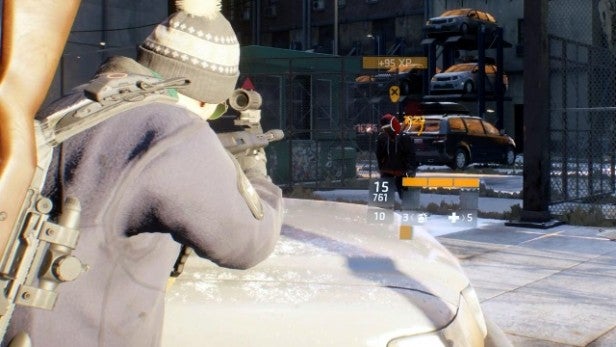
Even tackling missions at the appropriate level, The Division can be tough. The AI is, frankly, weirdly inconsistent. One minute you’ll have squads of highly-skilled enemies doing their best to rush you or outflank you, the next you’ve snuck in right behind some guy and he’ll take headshot after headshot almost without responding. As the missions escalate, however, the standard generally gets better, with new factions coming onboard with new tactics and new weaponry.
The Cleaners will be your first real challenge, packing flamethrowers and incendiary grenades to clear the streets of the virus, but they’re soon eclipsed by gangs of escaped prisoners and seasoned troops from a private military group. When they come in waves with fantastically tough, bullet-sponge bosses, they’ll make your life a nightmare, and that goes double when you’re stuck in a no respawn zone. I’m not saying that you couldn’t complete The Division solo, but I think it would be a nightmare.
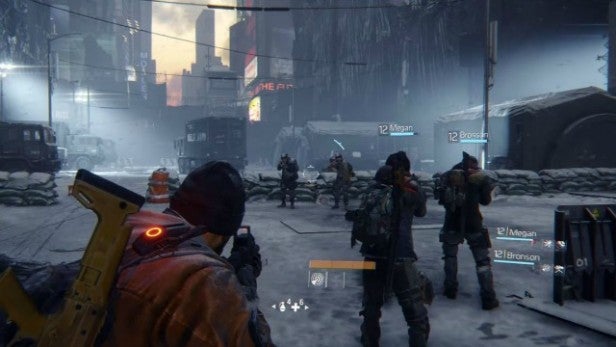
Luckily, you never have to. One thing The Division does so much better than Destiny is getting you together with other players. You can join a group at your base or any safe house, or simply cover side-missions and encounters – the game’s short combat-focused missions – on your tod, then opt for matchmaking when you reach a mission start point. Even quick matchmaking’s confusing at first, involving some scrambling around in menus unless you spot the prompt to click down the right-stick, but once you get the hang of it it’s quick and easy.
With a good team, The Division sings. You’ll surge forwards through abandoned construction sites or civic buildings, racing into cover, blasting bad guys, showing off your skills. You’ll find yourself up against it in courtyards full of Cleaners, one of you battling to suppress your attackers while another guns for headshots while another runs to revive a downed ally. The breadcrumb markers can be annoying, but they do a stellar job of keeping the team moving in the right direction.
There’s something of the DNA of Rainbow Six or Ghost Recon in the way that a good team works together, kills efficiently and doesn’t leave a fellow agent dying. Even with a bad team, The Division tends to be fun. With a good one, it’s like all the bits you loved from Destiny’s missions and strikes, for hour after hour.
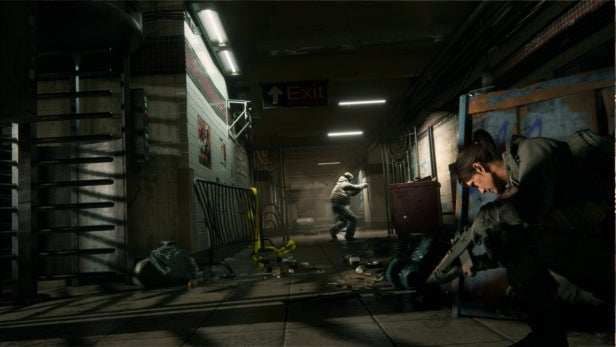
The approach does have its downsides. While The Division has something like Destiny’s Tower in its communal safe houses, outside those areas it’s heavily instanced, so you’ll never see another agent or help a stranger battle unless they’re already a member of your group. While New York is full of wandering survivors, on-the-loose dogs and assorted wildlife, it still feels like an oddly lonely place. The easy answer is to join a group, but then it can be tough to coordinate objectives, particularly if not everyone is playing with a mic turned on.
Now, I pretty much love The Division – or at least I’ve reached a point of addiction where I can’t tell the difference from love anymore. All the same, it’s far from perfect. While it makes more effort than Destiny to provide a variety of activities and side-missions, the vast majority still come down to fighting the same four types of enemies. Those that don’t involve finding and flipping switches against a time limit, and usually by climbing up things. That’s not great when your mobility is limited, pathways aren’t clear and your character can’t for some reason climb over walls or fences that you’re pretty sure your unfit self could manage in real life.
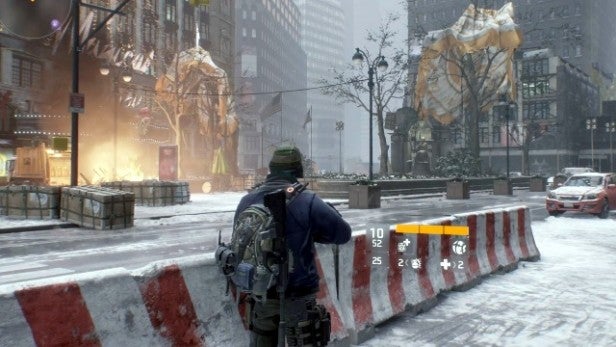
We can pretend all day that there’s no grinding or repetition in The Division, but it wouldn’t be the truth. You will inevitably spend a lot of time doing the same stuff, over and over again, even if you won’t be repeating the exact same strikes and missions, over and over again in true Destiny style.
And just as Destiny became reliant on a handful of tropes and clichés, so does the Division. There’s a lot of ‘go here’, ‘scan this’ and ‘guard that for five minutes’ going on, while the way many missions climax with another ludicrously armoured boss soon gets ridiculous. I won’t go on about the stupidity of helmets or even hats that can withstand sniper rounds and light machine gun fire, but this stuff was a lot easier to take with Destiny’s gigantic alien beasties than with The Division’s human foes.
With an open-world on this scale, there are also going to be some fumbles. By now we’ve all seen the videos of doorway blockers and laptop queues, but even some missions suffer from disastrous choke points where everybody needs to squeeze through a narrow space while under enemy fire, or areas where you respawn right in the middle of a Cleaner mob.
Meanwhile, bugs have reared their head several times while I’ve been playing, ranging from levitating corpses to disappearing sound or a sudden inability to pick up health and ammo. I’ve even had one spectacular fall straight through the streets of the New York map.
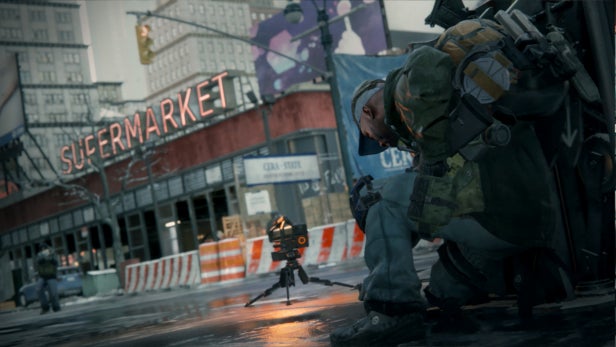
That’s a particular shame because, technically and graphically, The Division is otherwise a triumph. Sure, the console versions can’t compete with Ubisoft’s original tech demos, but the NYC architecture looks magnificent, the lighting and weather effects are gorgeous, while the amount of detail that has gone into the post-pandemic setting is frequently breathtaking. Say what you like about Ubisoft, but it does this stuff really well.
Some interiors are a little less inspiring, with generic cookie-cutter furniture and textures that seem to have been ripped from a last-gen Saint’s Row, but these are the exception rather the norm. All this comes with a bare minimum of loading screens, only seen when you load the game, join a network game or travel to a safehouse. The rest of the time, the whole world just streams through.
This is also a big game. After twenty hours or so in Destiny I was through the campaign and the strikes and just busy with the endgame content. After twenty hours or so in The Division, I still had levels to climb and a healthy chunk of missions still to go. The Division’s world feels more coherent than Destiny 1.0’s, and while the storyline isn’t astonishingly gripping, it’s fed in steadily and unobtrusively in a way that raises the stakes. You won’t exhaust the campaign quickly, and even when you do you have the Dark Zone; the mysterious walled-off area in the middle of the main Manhattan map.
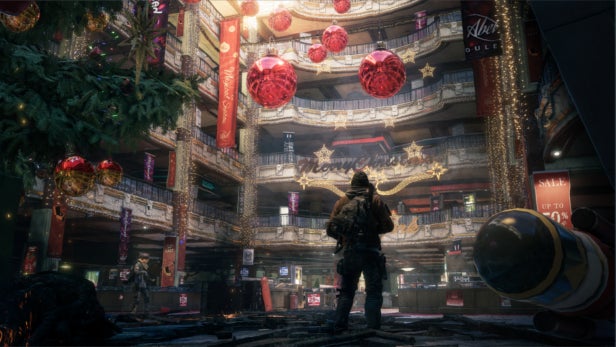
Some have spoken of the Dark Zone as end-game content, but it’s closer to a parallel experience of The Division. It has its own gear and progression system, its own collectibles and its own currency. It’s also where The Division’s PvP comes into play. You can access it quite early on from within the campaign, and use any loot you gather there to give yourself an easier time.
In a way, the Dark Zone is deceptively simple. You wander around the streets, tackling tougher variants of the same old mobs and grabbing all their loot. However, the loot is contaminated and can’t just be taken out through the checkpoints. Instead, you have to reach an extraction point, call in a helicopter and attach your goodies to a rope for extraction. They’ll then turn up in your loot cache in the safe houses and back at base.
What complicates Dark Zone is the other players. You see, when you die any loot and Dark Zone credits that you’re carrying are abandoned on the ground. Unless you respawn and grab them, some other evil bastard will. As a result, it pays for meaner players to prey on weaker agents, then rush in and scoop up their loot.
Doing so raises a wanted level, and when raised enough they’re labelled a rogue agent with a sizable bounty on their head. All the same, that’s little comfort when you’re lying on the ground. To make things harder still, your call for extraction acts like a beacon for other players, so any vultures in the area will descend on your position.
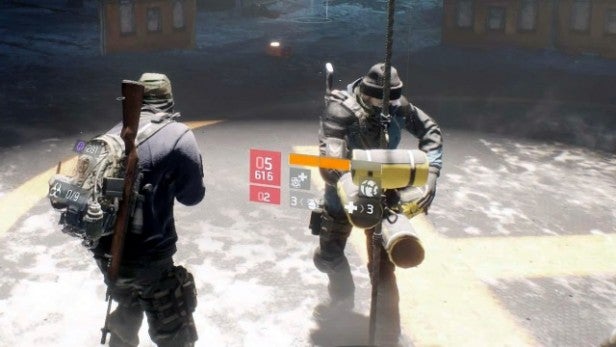
At its worst, Dark Zone can be like playing The Division with added griefers, which is exactly as much fun as it sounds. Yet what makes it work is the almost unbearable sense of tension. Players get more accomplished by working together to take down the mobs and scoop the loot, but can you really trust that other player not to gun you down when you turn your back? Could there be someone lurking in the shadows, even now, ready to turn on you when you’re at your weakest?
It’s also fascinating. Some players – and I’m one – play it straight and try to form ad-hoc alliances. Others are just predators, looking to slay and steal. It’s hard when you’re the former getting whacked by the latter, but also great when a team of friendly players gangs up for payback time. I’m growing to stop worrying and like the Dark Zone, though I’m still not sure there’s enough to it to extend The Division’s lifespan in the way that Destiny’s all-too cryptic endgame did.
Verdict
Like Destiny, The Division ruthlessly exploits the pleasures of the RPG, MMO and shooter to create one hideously addictive feedback loop. Combine that with the excitement of demanding co-op play and it can be an unstoppably thrilling game.
As with Destiny, it won’t be for everyone. While it has a more immediate and coherent storyline and setting, there’s still a lot of repetition and grind, plus the different systems and mechanics won’t be obvious for the first few hours. There’s a weird and ugly dissonance between the realism of the setting and your foes’ inhuman capacity for taking damage, and the AI varies between brilliant and barmy. It also remains to be seen whether The Division will have Destiny’s long-term appeal.
Yet if it gets its teeth into you, none of this negative stuff matters. This is what you’ll be doing for the next few weeks. Best sign up and accept your fate.

